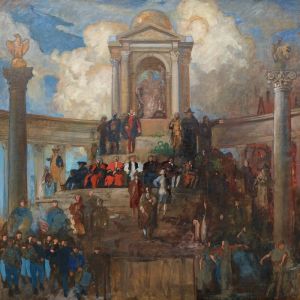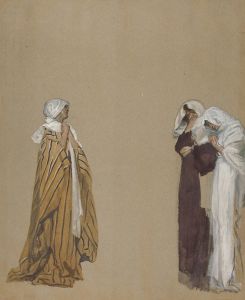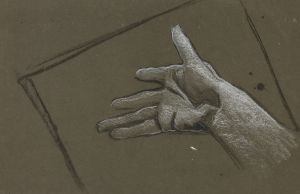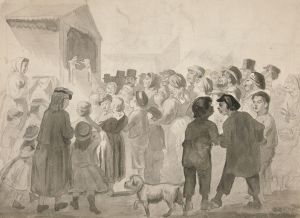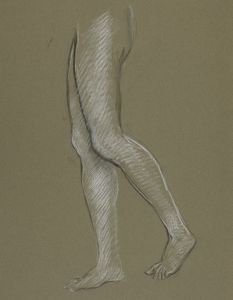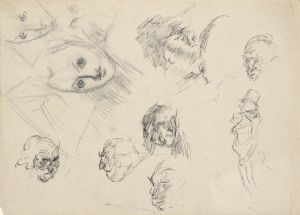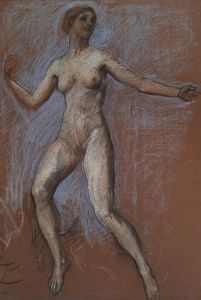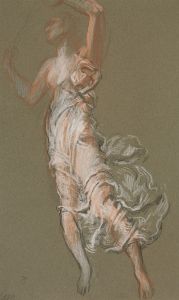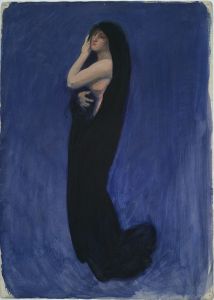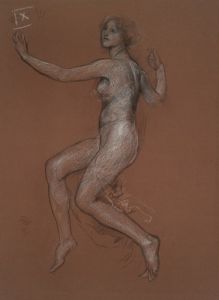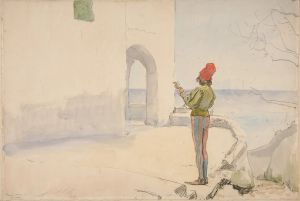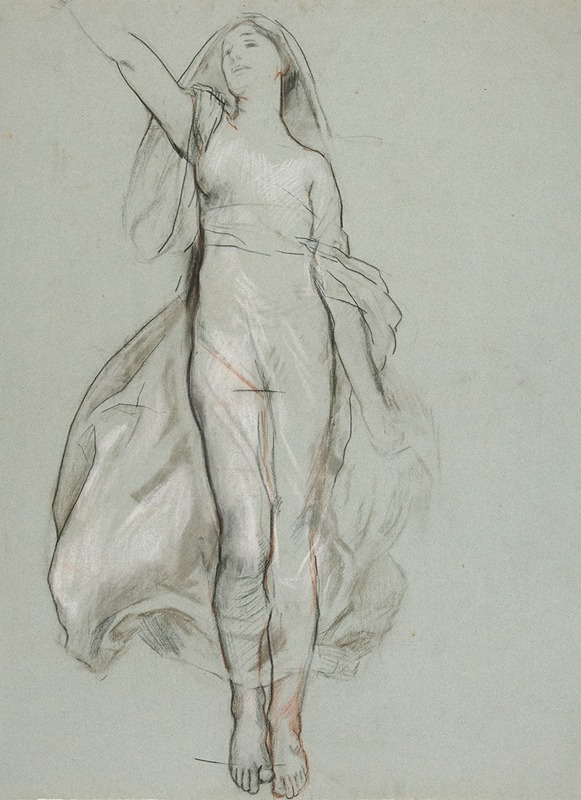
Study for central figure in ‘Spirit of Religious Liberty…guiding the ships’ mural at the state capitol building in Harrisburg, Pennsylvania
A hand-painted replica of Edwin Austin Abbey’s masterpiece Study for central figure in ‘Spirit of Religious Liberty…guiding the ships’ mural at the state capitol building in Harrisburg, Pennsylvania, meticulously crafted by professional artists to capture the true essence of the original. Each piece is created with museum-quality canvas and rare mineral pigments, carefully painted by experienced artists with delicate brushstrokes and rich, layered colors to perfectly recreate the texture of the original artwork. Unlike machine-printed reproductions, this hand-painted version brings the painting to life, infused with the artist’s emotions and skill in every stroke. Whether for personal collection or home decoration, it instantly elevates the artistic atmosphere of any space.
"Study for central figure in ‘Spirit of Religious Liberty…guiding the ships’ mural at the state capitol building in Harrisburg, Pennsylvania" is a preparatory work by Edwin Austin Abbey, an American artist known for his murals, illustrations, and paintings. This study was created as part of Abbey’s extensive contributions to the Pennsylvania State Capitol, where he was commissioned to produce a series of murals reflecting themes of governance, history, and cultural ideals.
The central figure in this study represents the concept of religious liberty, a theme that aligns with the broader ideals of freedom and democracy celebrated in the Capitol's artwork. Abbey’s murals in the Pennsylvania State Capitol are widely regarded as masterpieces of the American Renaissance movement, which sought to integrate fine art into public spaces to inspire civic pride and moral values. The "Spirit of Religious Liberty" mural, for which this study was created, is one of several works by Abbey that adorn the interior of the Capitol building.
Abbey’s preparatory studies, such as this one, were essential to his creative process. They allowed him to refine the composition, pose, and symbolism of the figures before executing the final mural. The study showcases Abbey’s meticulous attention to detail and his ability to convey complex ideas through allegorical imagery. The central figure, depicted as a guiding presence for ships, symbolizes the role of religious freedom in shaping and directing society. This theme resonates with Pennsylvania’s historical significance as a colony founded by William Penn on principles of religious tolerance.
Edwin Austin Abbey began work on the Capitol murals in the early 1900s, but his untimely death in 1911 left some of his projects incomplete. Despite this, his contributions to the Capitol remain a testament to his artistic vision and skill. The "Spirit of Religious Liberty" mural, along with its preparatory studies, reflects Abbey’s commitment to creating art that embodies the ideals of the American experiment.
The study itself is an example of Abbey’s use of classical techniques and allegorical storytelling, which were hallmarks of his work. It is not only a preparatory piece but also a standalone artwork that provides insight into the artist’s process and the cultural values of the time. Today, Abbey’s work in the Pennsylvania State Capitol is celebrated as a significant achievement in American mural painting, and his studies, including this one, are valued for their historical and artistic importance.





